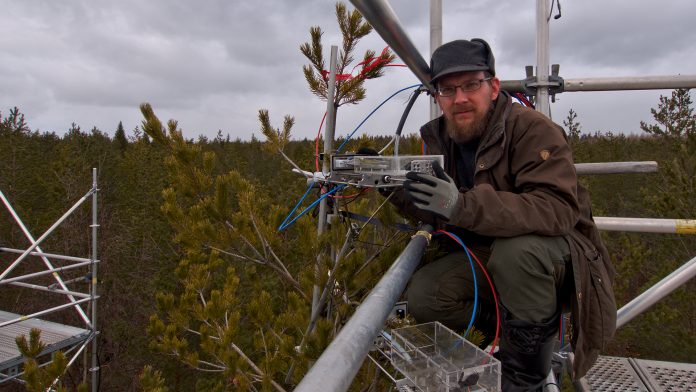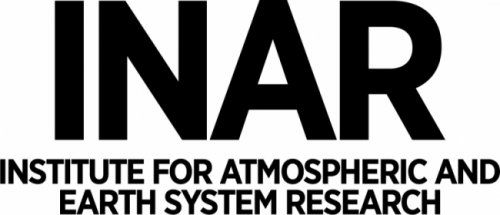The effects of the pandemic on the atmosphere may be non-intuitive, but how do atmospheric scientists organise their work under various restrictions?
The pandemic influences people’s lives everywhere. It influences atmospheric scientists in two ways: it brings new research problems to study and solve, and everyday work must be reorganised.
When it comes to natural sciences, reorganising may be challenging. Most physicists and chemists work hands-on, and various field stations and measurement instruments are in the core of the branch. Experiments cannot be carried out distantly or replaced by virtual meetings.
How do the scientists at the Institute for Earth System and Atmospheric Research (INAR) conduct their research under specific conditions?
The institute has many observational stations around the world, and all of them are equipped with specific technology to monitor the relations between Earth’s surface and the atmosphere. The Stations for Measuring Earth surface-Atmosphere Relations (SMEAR) are world-famous for their long-term measurements and open data.
Is data flow in atmospheric science endangered now?
“So far, everything seems to go on smoothly”, assures academician Markku Kulmala, the Director of the Institute. “I rely on our ability to offer high-quality data despite this exceptional situation, for obvious reasons.”
“First, we have permanent local staff in our stations, which means that travelling restrictions do not prevent the maintenance and upkeep of measurement equipment like different monitors and sensors. Second, we have, fortunately, not had any difficulties in getting travelling permissions if our researchers have wanted to visit the station. And third, we have constructed our measurement technology and research fields to sustain exceptional conditions, at least for a good while.”
One of INARs atmospheric scientists, Juho Aalto, has his seat in the largest of the SMEAR stations, which is in Hyytiälä, Finland. Currently, he works from home as much as possible to avoid contact but drops in the station several times a week.
“Our measurements are of course mainly automatised, so we do not have to stand by the devices constantly. However, a physical presence is, of course, alpha and omega in our field: the nature cannot be explored distantly. But I think all my colleagues are so profoundly acquainted with our subjects of research that a break of even a few weeks cannot destroy it.”
“Anyway, I hope that the raising generation of scientists understands the importance of field and laboratory work during their studies. The root of understanding the biological, chemical and physical phenomena of the forest or the atmosphere lies in near presence with the object.”
Aalto personally knows nearly every single tree and plant of the forest surrounding the main building of SMEAR II. “The restrictions during pandemic is not destroying my work, but of course, if restrictions go on, we have to use imagination to cope with them. At the moment, I recognise only minor nuisances. For example, I miss my colleagues. We usually have fun together, and no distant meeting can substitute social contact with them.”
Novel data from China
Juho Aalto and Markku Kulmala emphasise the importance of continuous measuring of the Earth-Atmosphere relations all over the world. Fortunately, the scientists of the institute have, since 1991, been establishing several field stations and monitoring systems not only in Finland and Europe, but in South Africa and China as well.
At the moment, Kulmala and his colleagues study the atmospheric processes and their changes during the reduction of traffic emissions. The SMEAR type stations in Beijing and Nanjing are offering interesting data.
“Many atmospheric phenomena are non-linear, of which follows that the result of an event cannot be intuitively predicted. For example, when the amount of nitrogen oxides decreases, it enhances ozone concentration and gas-to-particle conversion, which again may deteriorate air quality,” explains Kulmala.
“The data we get during the pandemic restrictions helps us to understand atmospheric processes and construct better models for the whole Earth system. The models, in turn, are of significant importance to understand these complex atmospheric pollution cocktail. The final aim of course is solid and applicable knowledge for well-being of people.”
Want to continue reading? Click here to read the University of Helsinki’s latest eBook on atmospheric science.








